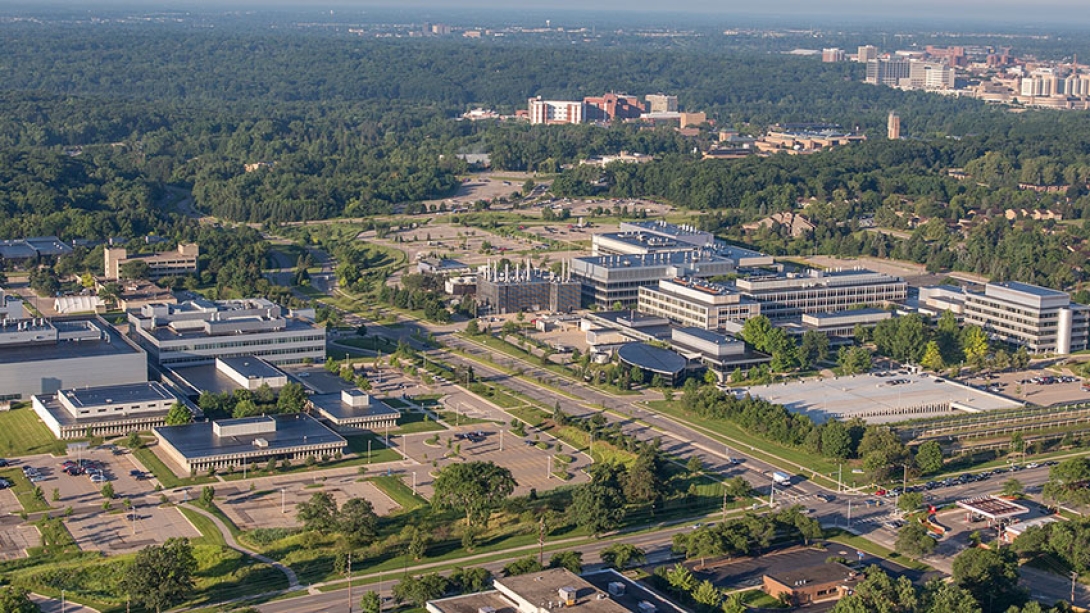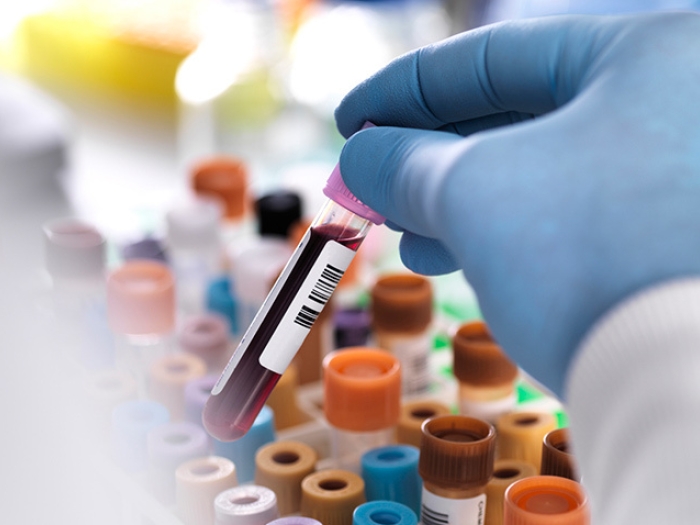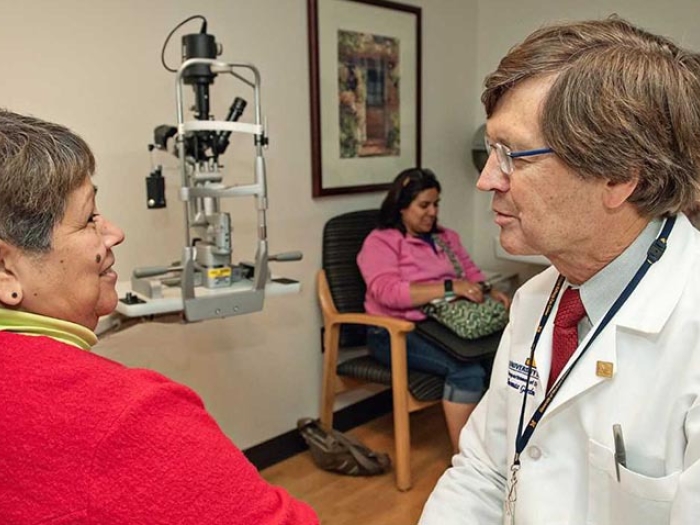It could have remained empty for years. Instead, the former pharmaceutical research campus has found new life as a thriving hub of innovation.
1:38 PM
Author |
An astounding piece of news hit Ann Arbor in January 2007: the giant pharmaceutical company, Pfizer, would leave town, after 50 years of developing new medicines in the northeast corner of the city.
LISTEN UP: Add the new Michigan Medicine News Break to your Alexa-enabled device, or subscribe to our daily updates on iTunes, Google Play and Stitcher.
Its sprawling 174-acre campus, with 2 million square feet of research labs and offices, and 2,000 employees, would soon fall silent. As the Great Recession arrived in 2008, the chance that another company would buy the complex faded.
But behind the scenes at the University of Michigan, leaders and researchers had their own ideas.
What if the university bought the former Pfizer campus to address a research space crunch and enable scientists from many fields to work together in new ways?
What if researchers could fill the vacant buildings with new centers and institutes, created to tackle major research challenges? What if some of the space fostered interactions with industry that could accelerate the impact of academic research?
The believers gave us encouragement, freedom to operate and a ten-year commitment of funding. The naysayers gave us the incentive to prove them wrong and I think we've done that!David Canter, M.D.
And what if the university could bring together the widely scattered support services that help research run smoothly, and offer amenities to enhance the quality of work and life?
Soon, those what-ifs crystallized into a plan. By summer 2009, U-M had bought the property for $108 million and renamed it the North Campus Research Complex.
Fast forward to summer 2019. All of those original what-ifs, and more, have come true.
Today, more than 3,500 U-M faculty, staff and students, and employees of private companies, report to work at NCRC each day. The Medical School has invested more than $300 million to transform the space and operate it – at a tenth of the cost it would have taken to build similar facilities from the ground up.
SEE ALSO: How U-M's Genetic Research Bank Fuels Precision Health Work
And NCRC has fulfilled the vision of fostering new types of cross-disciplinary research and new entities organized around a research goal instead of an academic department.
For instance, scientists from medical and engineering fields explore the interaction of living tissue and manmade surfaces, in the labs of the Biointerfaces Institute. Meanwhile, others strive to improve the odds for the most desperately ill patients through research at the Michigan Center for Integrative Research in Critical Care. Researchers from the Frankel Cardiovascular Center and Rogel Cancer Center move their fields forward from their labs at NCRC.

Not all the research at NCRC happens in laboratories. At the Institute for Healthcare Policy and Innovation, hundreds of clinicians, data experts and health policy wonks crunch massive amounts of information to make health care better, safer, more equal and more affordable through.
Researchers from across the university come to NCRC to use its shared research facilities, from microscopes and DNA testing to animal care facilities and a repository of millions of biomedical samples. The university-wide Precision Health initiative is based there, as are the Technology Transfer and Business Engagement offices that help the university's research reach the outside world.
MORE FROM MICHIGAN: Sign up for our weekly newsletter
Meanwhile, more than a dozen companies use the "test track" environment at the M-City facility built on 32 acres of NCRC land to try out their latest technologies for autonomous and connected vehicles. Nearly 100 small startup companies founded by U-M researchers have gotten their start in NCRC "incubator" space before leaving the nest.
And whether they ever set foot at NCRC or not, many other U-M researchers benefit from the professional services based there, from clinical trial oversight and administration to offices that seek to increase interactions between industry and biomedical scientists.
"In 10 years, NCRC has grown into a hub for our highly collaborative faculty and their teams," notes Steven Kunkel, Ph.D., Interim Chief Scientific Officer and Senior Associate Dean for Research. "Working together, we've created one of the country's most robust biomedical research environments, leveraging Michigan Medicine's strengths through aligned interests, expertise, and technologies. And ultimately that translates into breakthroughs that will improve the lives of patients and their families."
Despite its name, NCRC isn't just about research.
Tens of thousands of patients from Michigan Medicine and beyond benefit from diagnostic tests carried out each year at a new Clinical Pathology facility that opened at NCRC in mid-2018.
Thousands more people from the university and community come to NCRC each year for events large and small, from the annual Match Day ceremony for graduating medical students, to seminars and training classes.
A child care center, fitness center, dining hall, art galleries, library services and even a self-driving shuttle bus round out NCRC's exercise in creating a new kind of community. Nearby, more than a dozen new businesses have opened up since U-M moved in, driving the local economy along Plymouth Road.
David Canter, M.D., oversaw the site during its final Pfizer years and later joined U-M as the executive director of the team that strategically filled NCRC. Looking back, he says, "In the beginning our NCRC team heard from both believers and naysayers and I truly thank them both. The believers gave us encouragement, freedom to operate and a ten-year commitment of funding. The naysayers gave us the incentive to prove them wrong and I think we've done that!"
As NCRC reaches its 10th anniversary, the last open space is under renovation, destined for more Medical School research lab use and an atrium to encourage interactions.
The "what if" thinking of the past decade has paid off – and paved the way for thousands of researchers to come up with their own "what if" ideas, and carry them out.

Explore a variety of healthcare news & stories by visiting the Health Lab home page for more articles.

Department of Communication at Michigan Medicine
Want top health & research news weekly? Sign up for Health Lab’s newsletters today!





